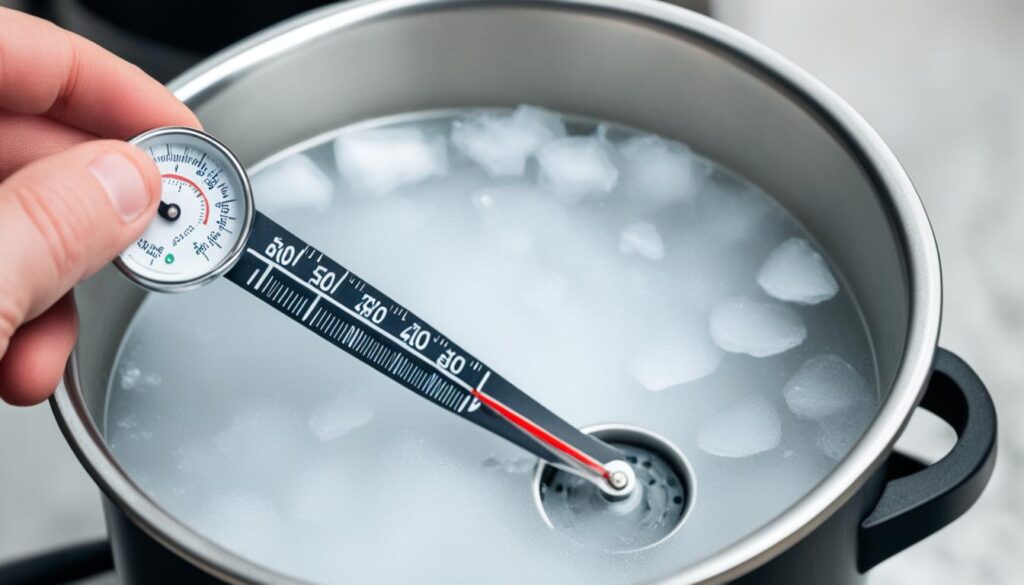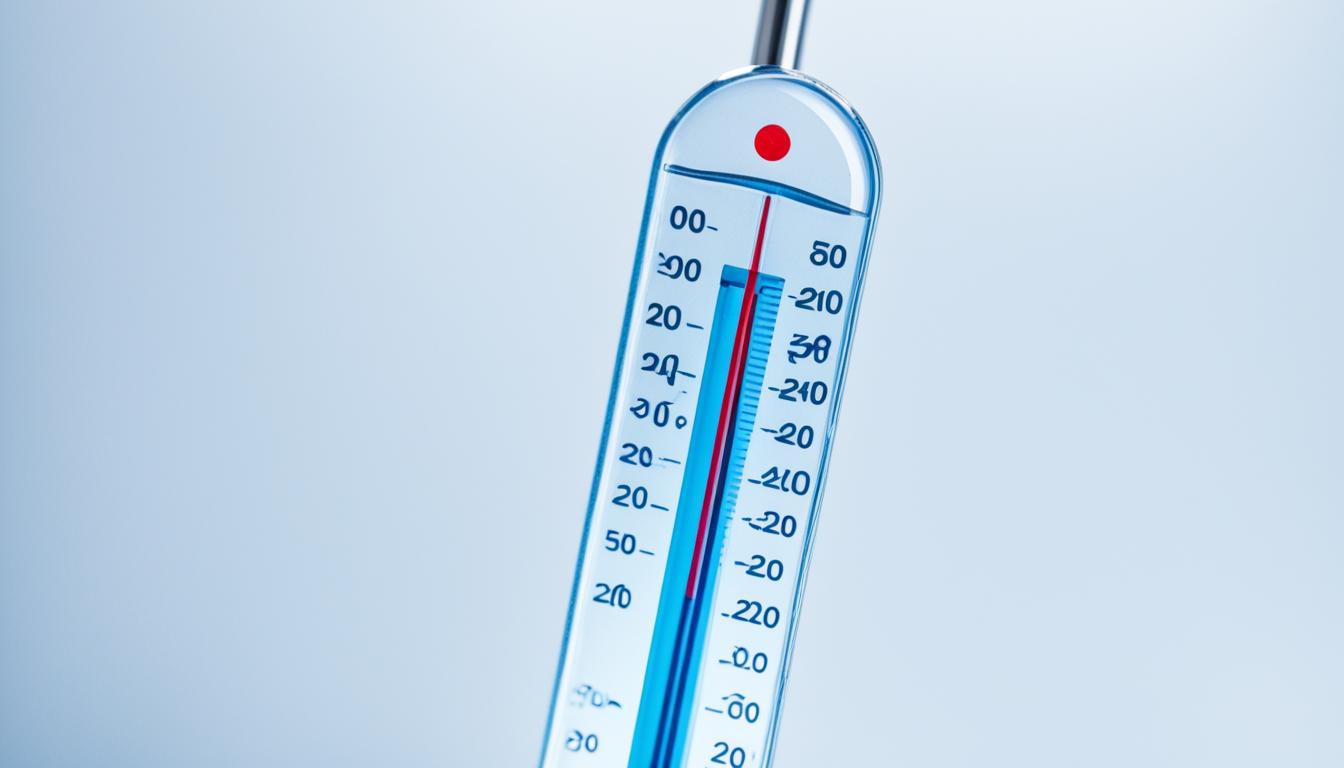Have you ever wondered if your instant-read thermometer is giving you accurate temperature readings? Are you confident that your thermometer is calibrated correctly? The truth is, many kitchen thermometers can become less accurate over time, affecting the precision of your cooking and potentially compromising food safety.
In this guide, we will show you how to calibrate an instant read thermometer to ensure accurate temperature readings every time. Whether you’re a seasoned chef or a home cook, understanding the importance of calibrating your thermometer is crucial for achieving perfectly cooked meals.
So, are you ready to discover the secrets of precise temperature measurement? Let’s dive in!
Why Calibrate Your Instant Read Thermometer
The accuracy of an instant-read thermometer can decrease over time due to handling, dropping, or rough use. Therefore, it’s important to calibrate your thermometer to ensure it is set to the correct temperature. By calibrating your thermometer, you are resetting it to its most accurate state. Regular calibration is crucial for reliable temperature readings and to prevent undercooking or overcooking food.
“Calibrating your instant read thermometer is essential for accurate temperature readings. Without proper calibration, you may end up with overcooked or undercooked food, resulting in a less-than-ideal dining experience.”
If you notice that your thermometer is consistently displaying inaccurate readings or if it hasn’t been calibrated in a while, it’s time to perform a thermometer accuracy testing. There are a few methods to test and adjust the accuracy of your thermometer:
1. Ice Bath Test
One of the most common ways to test the accuracy of an instant-read thermometer is the ice bath test. Fill a glass with crushed ice and just a small amount of water, making sure that the ice isn’t floating. Stir the ice bath to ensure a uniform temperature, then insert the thermometer probe into the ice bath. The thermometer should read 32°F (0°C) when fully submerged. If it doesn’t, you can use the adjustment nut (if available) to calibrate it to the correct reading.
2. Boiling Water Test
Another method to test thermometer accuracy is the boiling water test. Use a boiling point calculator to determine the exact boiling point of water based on your altitude and barometric pressure. Once you know the boiling point, bring a pot of water to a rolling boil and insert the thermometer probe into the boiling water, avoiding contact with the pot. The thermometer should read the boiling point of water or be within a small range of the calculated boiling point. If it’s not accurate, you can adjust it accordingly to ensure precise readings.
It’s important to note that different types of thermometers may have specific calibration methods. Refer to the manufacturer’s instructions for your specific thermometer model to ensure the correct calibration process.
Regularly calibrating your instant-read thermometer will help you achieve accurate temperature readings and ensure the safety of your food. By taking the time to calibrate your thermometer, you can have confidence in your cooking and create delicious meals with precision.
When to Calibrate Your Instant Read Thermometer
Calibrating an instant-read thermometer is crucial to ensure accurate temperature readings in your kitchen. Keeping your thermometer calibrated guarantees precise cooking and food safety. But when is the right time to calibrate your instant-read thermometer?
It is recommended to calibrate your instant-read thermometer every six months. However, if your thermometer has been dropped, jostled, or used to measure extreme temperature ranges, it’s essential to calibrate it more frequently. These factors can affect the accuracy of your thermometer over time, and regular calibration helps maintain its reliability.
Some instant-read thermometers come with an accredited calibration certificate, ensuring their accuracy upon purchase. However, even if your thermometer has this certificate, it’s still important to test it periodically to verify its accuracy.
If you are unsure about the accuracy of your thermometer or if it’s been a while since your last calibration, it’s crucial to test it before using it in the kitchen. This ensures that you are getting precise temperature measurements, giving you peace of mind while cooking and ensuring the safety of your food.
Testing Your Thermometer for Accuracy
To test the accuracy of your instant-read thermometer, you can use a simple method known as the “boiling water test.” Fill a pot with water and bring it to a rolling boil. Insert your thermometer probe into the boiling water without touching the sides or bottom of the pot. The thermometer should read 212°F (100°C) at sea level. If it doesn’t, take note of the difference in temperature and adjust your readings accordingly when using the thermometer.
Remember, accurate temperature readings are crucial for cooking food to the proper doneness and ensuring food safety. Regular calibration of your instant-read thermometer will help you achieve precise results, so it’s important not to overlook this important step.
Continue reading to learn how to calibrate your instant-read thermometer in Section 4.
How to Calibrate an Instant Read Thermometer
To ensure accurate temperature readings from your instant-read thermometer, regular calibration is necessary. By calibrating your thermometer, you can be confident that it is providing precise measurements for safe and optimal cooking. In this section, we will guide you through two common methods of calibration: the ice bath test and the boiling water test.
The Ice Bath Test
For this calibration method, you will need an insulated container, crushed ice, and a small amount of water. Fill the container with the crushed ice, ensuring that the ice is not floating. Add a small amount of water to create a slushy mixture. Stir the ice bath to distribute the temperature evenly.
Next, insert the thermometer probe into the ice bath, making sure it is fully submerged. The temperature reading should stabilize after a few minutes. If the thermometer reading does not show 32°F (0°C), you will need to adjust it.
Determine the difference between the reading and the desired temperature (32°F or 0°C) and make the necessary adjustment on the thermometer. Refer to the thermometer’s instructions for specific adjustment methods, as they can vary depending on the model.
The Boiling Water Test
The boiling water test is another effective method to calibrate your instant-read thermometer. Begin by filling a pot with water and bringing it to a rolling boil. Use a boiling point calculator to determine the exact boiling point based on your altitude and barometric pressure.
Once the water is boiling, carefully insert the thermometer probe into the water, ensuring it doesn’t touch the sides or bottom of the pot. Allow the temperature reading to stabilize. Compare the thermometer reading with the boiling point temperature obtained from the calculator.
If there is a difference between the two readings, you will need to adjust your thermometer accordingly. Again, refer to the manufacturer’s instructions for the specific calibration procedure for your thermometer model.
Regularly performing these calibration tests will help maintain the accuracy of your instant-read thermometer, ensuring precise temperature readings and enhancing your cooking results.

| Calibration Method | Steps |
|---|---|
| Ice Bath Test |
|
| Boiling Water Test |
|
How to Adjust Different Types of Thermometers
Different types of instant-read thermometers may require different adjustment methods. For digital thermometers, there are usually no manual adjustments that can be made. Instead, you can add or subtract the inaccuracy to the desired cooking temperature and regularly check the thermometer for accuracy. Dial thermometers, on the other hand, can be calibrated by twisting the nut under the gauge using pliers. It’s important to follow the manufacturer’s instructions for precise calibration.
| Type of Thermometer | Adjustment Method |
|---|---|
| Digital Thermometers | No manual adjustments. Add or subtract inaccuracy to desired temperature. |
| Dial Thermometers | Twist the nut under the gauge using pliers. |
It’s crucial to be aware of the specific adjustment procedures for your thermometer to ensure accurate readings. Following the correct calibration instructions will help you achieve precise measurements for optimal cooking results. Remember to regularly check and recalibrate your thermometer to maintain its reliability.
Cleaning and Storing Your Thermometer
Proper maintenance of your instant-read thermometer is crucial to ensure its accuracy and longevity. By following some simple cleaning and storage practices, you can keep your thermometer in optimal condition for reliable temperature readings in the kitchen.
To clean your thermometer, start by washing it with hot soapy water. Make sure to thoroughly rinse off any soap residue. To sanitize the thermometer, you can use a food-safe sanitizer or wipe it with a cloth soaked in rubbing alcohol. After cleaning and sanitizing, allow the thermometer to air dry completely before the next use.
When it comes to storing your thermometer, it’s essential to protect it from damage and prevent calibration shifts. Store the thermometer in its plastic case or a dedicated protective sleeve to shield it from accidental bumps or impacts. Find a secure location, such as a kitchen drawer or cabinet, where the thermometer won’t be exposed to excessive heat, moisture, or extreme temperature fluctuations.
By implementing these cleaning and storage practices, you can ensure that your instant-read thermometer remains accurate and reliable, providing you with precise temperature readings for your cooking needs. Proper maintenance not only enhances the longevity of your thermometer but also contributes to food safety and optimal cooking results.
